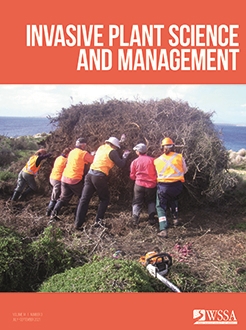The composition of nonnative floras is influenced by a region's socioeconomic history, yet rarely are these factors studied alongside plant naturalization rates over time. Such information is especially critical for archipelagos, which often host large numbers of nonnative plants and would benefit from prevention of inter-island spread. We compiled the first record of occurrence and first record of naturalization for all naturalized plants in Hawai‘i alongside data on their origin, native climate types, taxonomy, and likely introduction pathway and compared rates of naturalization with socioeconomic trends. We found that the rate of total plant naturalizations has increased at a roughly constant rate during the past century without any sign of plateauing. However, this relatively steady increase is underlain by notable fluctuations in naturalization rates for different introduction pathways, with ornamentals increasing recently, while agriculture-related plants have decreased. Furthermore, this trend mirrors a shift from an agriculture-dominated economy to a tourism-based one associated with increases in both resident and tourist populations as well as general economic well-being. We further found that the average naturalized species spreads at a rate of 1.86 islands per decade, eventually occupying most major islands in the archipelago, and the rate of spread appears to be increasing since Hawai‘i’s economic shift. Our findings also emphasize the diversity of Hawai‘i’s nonnative flora, which originates from a variety of climates, continents, and taxonomic groups. We demonstrated that many nonnative species have native ranges that include temperate climates, which is important, because these climates typically co-occur with higher-elevation, remnant patches of native-dominated ecosystems in Hawai‘i. This study reveals trends that may help predict a species’ ability to naturalize and spread within and between islands, and we discuss management implications that may be extended to other regions.
How to translate text using browser tools
9 June 2021
Plant naturalization trends reflect socioeconomic history and show a high likelihood of inter-island spread in Hawai‘i
Kelsey C. Brock,
Curtis C. Daehler
ACCESS THE FULL ARTICLE
archipelago
biosecurity
introduction pathway
invasive species
ornamental






